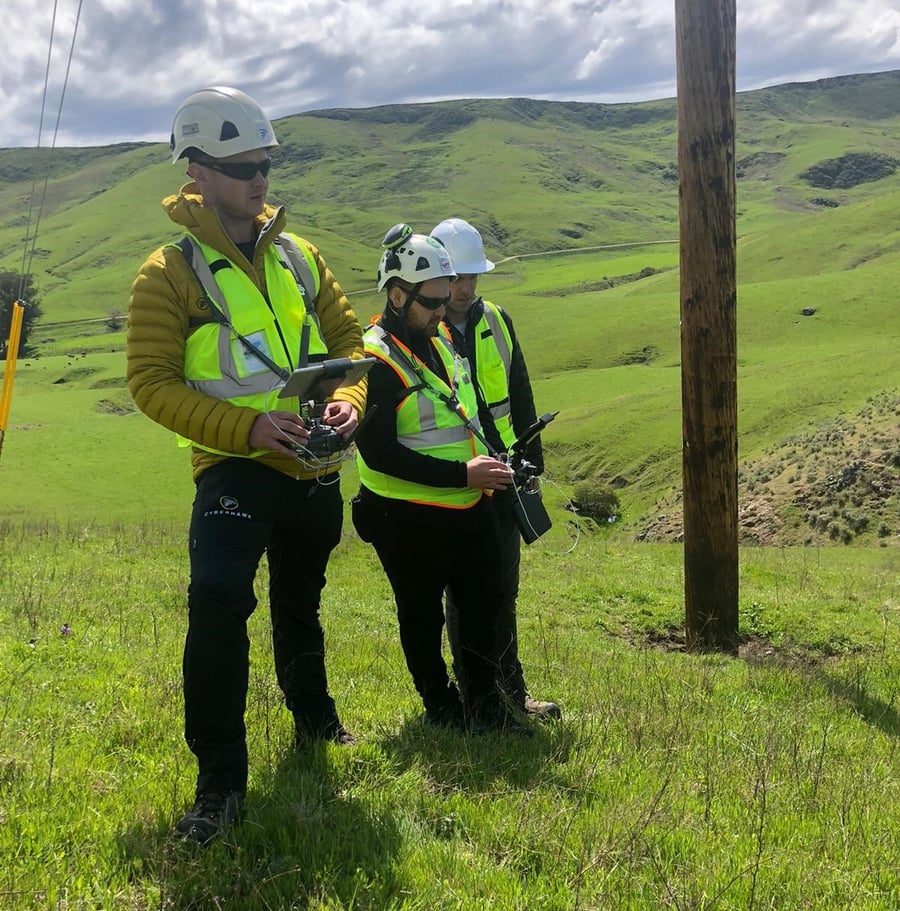In this blog, our CEO, Chris Fleming, looks at everything it takes to ensure that when it comes to drone inspection, Cyberhawk can always offer the right people with the right skills and best training to deliver successfully on complex power grid inspection campaigns.

Cyberhawk was founded back in 2008 when drone technology was quite unreliable.
We decided to teach pilots to fly manually and not to rely solely on GPS or automation because in those days it was so flakey. If you think about commercial pilots, they fly most of the time in autopilot, even when landing, but none of us would be happy if they didn’t have the skills to take control if the autopilot failed. This approach, although time consuming means we operate at a different level to most organisations.
This hands-on approach to pilot training is the foundation of Cyberhawk’s success in the energy and utility sectors. We don’t use subcontractors – all our drone pilots are employed, trained, and retained by Cyberhawk. We do this to make sure every customer receives the same gold standard of work. In truth, we’ve even found it difficult to bring in pilots with some previous experience and to then get them to adapt successfully to our ways. So we often recruit new pilots, encourage them to develop their skills through experience, and support them to develop a career with us.
Competency-based training
We have four levels of pilot training based on competency; as soon as an individual pilot has demonstrated the necessary skills at one level, they move up to the next. The top-level of competency is designed to ensure the individual has the skills required to operate drones in and around the most complex or dangerous energy or utility infrastructure.
Moving through the four levels can take anything from 12 to 48 months depending on the confidence and aptitude of the individual pilot. We don’t rush them. We aim to produce experienced and competent pilots and inspectors who have been exposed to risk gradually so that they are prepared for the task they face at each level. By beginning with simpler flying tasks and then slowly move on to increasingly complex missions, we can help to ensure that their confidence grows with their competency.
If you’re interested in finding out how iHawk can support your project
download your free power grid capabilities overview pack now!
Capable and resilient pilots
Alongside their flying competency, we believe that our drone pilots and inspectors need to be highly capable and self-reliant when working out in the field.
Succesful power grid drone pilots tend to be adventurous, resilient, capable of thinking on their feet, and not easily put off by bad weather, tough terrain, or difficult people. This is work that really does require an adventuring spirit, as the two-man teams are always working remotely in challenging environments. Teams must be fully equipped with everything they need from satellite phones, bear repellent to snake guards. They also need to be fully self-sufficient which means being trained in everything from first aid to fire fighting.
And, of course, they always need to be very risk-aware. Alert to the changing surroundings to ensure that they remain safe at all times and that they can get out of there if something does happen.

Consistent and systematic inspectors
Alongside these personal skills and capabilities, our two man teams also need to be able to demonstrate a consistent and systematic approach to data gathering.
They are trained to understand why they need to get the right data in the right way – every time. Indeed, the success of any power grid inspection campaign is built on our pilots capturing, saving, and storing data in the same order for each asset every time. This is critical because it ensures that when inspection engineers come to review the inspection data using iHawk, our visualization software, the process is much faster and more efficient. This helps to give our clients greater visibility of the condition of any asset, and it gives them the confidence that they have a detailed understanding of the risks associated with all their power network assets.
If you’re interested in finding out how iHawk can support your project
download your free power grid capabilities overview pack now!
In short, our pilots are trained to carry out thousands of inspection tasks in a systematic way, while doing it safely time after time. In recent years, we have developed pilot competency frameworks for other certification bodies and we are also training client’s in-house pilots to meet our standards.
So whether we’re flying the drones ourselves, or training others to do it safely, we want to make sure our clients are happy to be engaged with this exciting technology. In the future, we may very well see autonomous drones collecting inspection data, but until that day comes, we will continue to need highly trained drone pilots who deliver valuable results on every power grid inspection campaign from day one.
Interested in joining the Cyberhawk team? Check out our exciting career opportunities on our website.
